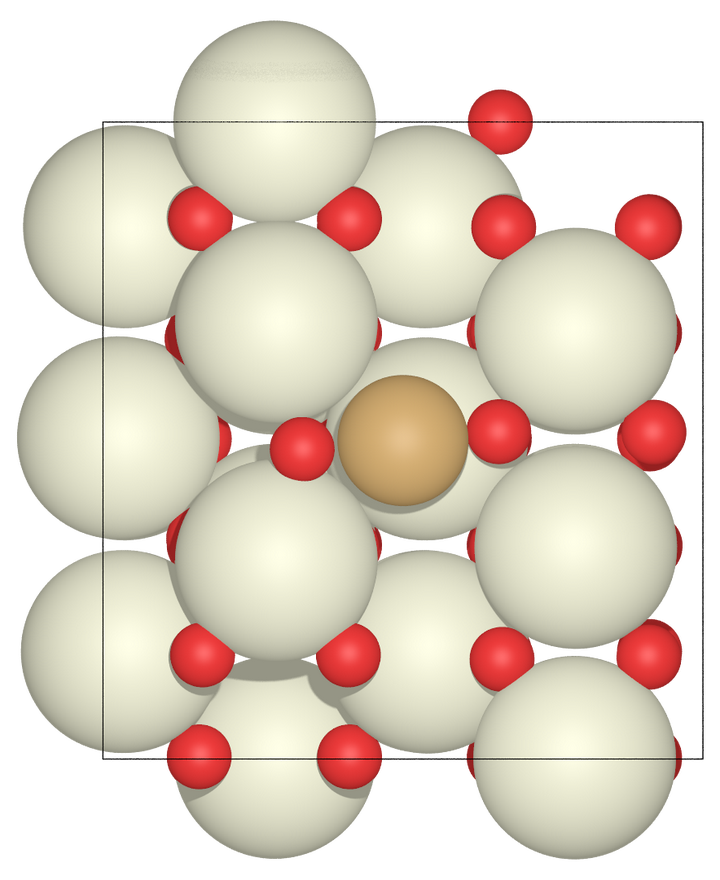
Activate the Intel Compilers/ Intel MPI Environment. Details Information can be taken from Installing VASP from VASPwiki. Compiling VASP-5.4.4 with Intel MPI-5.0.3.
All documentation: the user manual, tutorials, examples, and lecture notes you will find on our wiki.VASP (Vienna Ab Initio Simulation Package) is an application for first-principle calculations of the electronic structure on the atomic scale by approximating solutions to the Schr&246 dinger equation. Cd vasp.5.4.4 cp /arch/makefile.include.linuxintel makefile.include Prepare the GPU stuff Change a portion of your makefile.include depending on your system. This is the catalog for HPC applications on Carbon. For Linking Intel MKL Wrapper of fftw at makefile.include. Edit makefile.include.linuxintel.
License5-1563 releasename54105Feb16 variant'vtst' buildcnl6.0intel17.0.1.132 releasever5.4.1 bindir. In order to use a particular binary in a job file, we recommend setting the path to the vasp binary in your job file in the following way: Example 1. OPTIONAL If you want to compile vasp with Wannier90, compile Wannier90 v1.2 and append -DVASP2WANNIER90 to the CPPOPTIONS variable in the makefile.include, and append the Applications are often referred to as modules because they are managed using the Environment Modules package.We are able to use all of them since all these binaries happen to be statically linked. But keep in mind some of the compiled VASP 5.4.4 binaries may be compiled with the flag.
The man page for the module command ( man module).Table of Contents Index A compact list of packages, grouped by function. Crash on different versions (at least 4.4.1 and 4.4.5 (including PAW) work).An exception to this are a handful of basic modules that are pre-loaded when you log in.You can access this catalog on Carbon itself using the following commands toAnd longer descriptions (usually with copyrights and links), In the src/module.f90 file if you use VASP.4.x.
Package names in red means no additional instructions are available. Package names in blue lead to additional instructions. Versions are listed separately if the descriptions differ. Descriptions Long descriptions and package home URLs. The version shown in bold is the default (the version that is loaded when no specific version is given in the command line).
ABINIT is distributed under the GNU General Public Licence. Different utility programs are provided. Excited states can be computed within the Many-Body Perturbation Theory (the GW approximation and the Bethe-Salpeter equation), and Time-Dependent Density Functional Theory (for molecules). ABINIT can optimize geometries and perform molecular dynamics, generate dynamical matrices, Born effective charges, and dielectric tensors, based on Density-Functional Perturbation Theory, and many more properties.
This module version supports and libxc+wannier90. ABINIT is distributed under the GNU General Public Licence. Different utility programs are provided. Excited states can be computed within the Many-Body Perturbation Theory (the GW approximation and the Bethe-Salpeter equation), and Time-Dependent Density Functional Theory (for molecules). ABINIT can optimize geometries and perform molecular dynamics, generate dynamical matrices, Born effective charges, and dielectric tensors, based on Density-Functional Perturbation Theory, and many more properties. ABINIT is an electronic structure modeling package to find the total energy, charge density and electronic structure of systems made of electrons and nuclei (molecules and periodic solids) within Density Functional Theory (DFT), using pseudopotentials and a planewave or wavelet basis.

The CAMPOS Atomic Simulation Environment is released under GPL2. ASE provides Python modules for manipulating atoms, analyzing simulations, visualization etc. Ase/3.9The Atomic Simulation Environment (ASE) is the common part of the simulation tools developed at CAMd.
geometry optimization of molecules and periodic structuresNote: This module should be loaded BEFORE vasp. handles large-scale systems with upwards of 1,000 atoms accurate first-principles and fast semi-empirical methods. scripting language and graphical user interface atomic-scale electrical transport properties of nanodevices
At present, it provides C and Fortran77 interfaces to a portably efficient BLAS implementation, as well as a few routines from LAPACK. Atlas/3The ATLAS (Automatically Tuned Linear Algebra Software) project is an ongoing research effort focusing on applying empirical techniques in order to provide portable performance. Atk/2016Note: This module should be loaded BEFORE vasp.
order-N in execution time and memory supports more than 1 million atoms handles gzip- or bzip2-compressed input high-resolution bitmap PNG/JPEG/EPS screenshots (bitmap only)

C++0x will also include several more Boost libraries in addition to those from TR1. Ten Boost libraries are already included in the C++ Standards Committee's Library Technical Report (TR1) and will be in the new C++0x Standard now being finalized. Boost libraries are intended to be suitable for eventual standardization.
Vasp5.4.4 Software Such As
License: open-source citation required. NOTE: This Carbon version has been modified so that the job control tag is *optional*, with the default being $CHARGEMOL_HOME/lib/atomic_densities/. DDEC net atomic charges are optimized to simultaneously reproduce atomic chemical states and the electrostatic potential surrounding a material, and thus are well-suited for constructing force-fields used in atomistic simulations (e.g., classical molecular dynamics or Monte Carlo simulations) and for quantifying electron transfer between atoms in complex materials and during chemical reactions. The program analyzes electron and spin density distributions generated by a quantum chemistry (e.g., DFT, coupled-cluster, etc.) calculation performed with a software such as VASP, Gaussian 09, CP2K, GPAW, SIESTA, etc. To use Boost, supply in your Makefile: CPPFLAGS += -I$BOOST_HOME LDFLAGS += -L$BOOST_HOME/lib -lboost_ chargemol/2014Implements the Density Derived Electrostatic and Chemical (DDEC) charge partitioning scheme - performs atomic population analysis to determine net atomic charges, atomic spin moments, and effective bond orders.


 0 kommentar(er)
0 kommentar(er)
